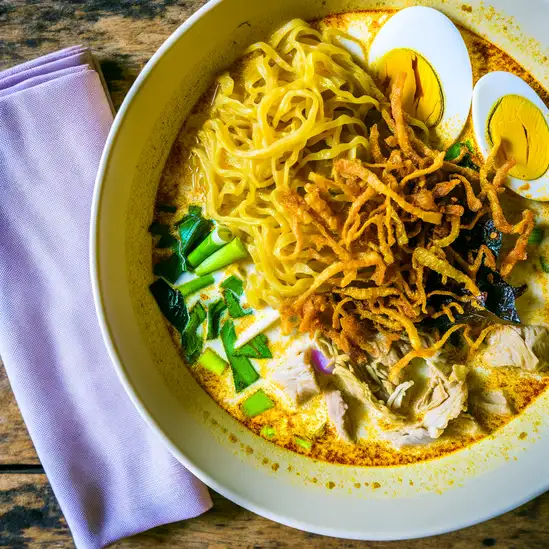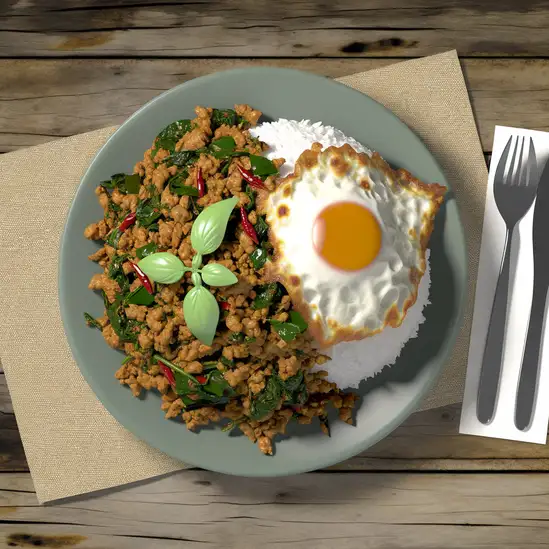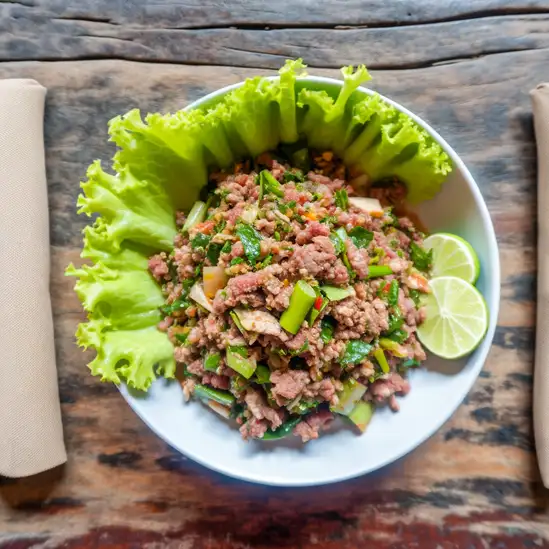


If you’re dreaming of a place where the pace slows just enough to savor every moment,Hua Hin is that kind of town. It’s this charming blend of old-school Thai beach vibes mixed with a touch of royal history that gives the place a relaxed yet refined feel. Imagine waking up to the gentle sound of waves lapping against the shore,the salty breeze carrying hints of grilled seafood and fresh tropical fruit from the nearby markets. Hua Hin isn’t just a beach town; it’s where locals and travelers mingle over steaming bowls of boat noodles or sip on sweet,creamy Thai iced tea while watching colorful fishing boats bob in the harbor. Walking through the streets,you’ll notice the warm smiles of vendors selling everything from handwoven textiles to fragrant jasmine garlands. The night markets come alive with sizzling street food stalls,the air thick with the aroma of lemongrass and chili,tempting you to try dishes bursting with bold flavors. There’s a laid-back charm here that invites you to slow down,whether you’re exploring the lush hills nearby or wandering through the elegant,century-old railway station that feels like a step back in time. What really makes Hua Hin special is its balance — a place where you can lounge on quiet beaches in the morning,then dive into lively local culture by evening. It’s a spot that feels both familiar and refreshingly different,perfect for those who want to soak up authentic Thai life without the overwhelming crowds. Trust me,once you’re here,you’ll find yourself wanting to stay just a little longer.
The information on this page is currently being reviewed by Tripkliq and should be used as a guide only
Eng word: Hello
Eng pronunciation: sah-wah-dee
Local language: สวัสดี
Eng word: Goodbye
Eng pronunciation: lah-gon
Local language: ลาก่อน
Eng word: Thank you
Eng pronunciation: khawp-khun
Local language: ขอบคุณ
Eng word: How much
Eng pronunciation: tao-rai
Local language: เท่าไหร่
Eng word: Toilet
Eng pronunciation: hong-nam
Local language: ห้องน้ำ
Eng word: Help me
Eng pronunciation: chuay-duay
Local language: ช่วยด้วย
Eng word: Yes
Eng pronunciation: chai
Local language: ใช่
Eng word: No
Eng pronunciation: mai
Local language: ไม่
Eng word: Excuse me
Eng pronunciation: kaw-toht
Local language: ขอโทษ
Hua Hin became a popular destination in the 1920s when King Rama VII built the Klai Kangwon Palace, which means 'Far from Worries'. The palace is still used by the Thai royal family today.
Constructed in the 1920s, the Hua Hin Railway Station is one of Thailand's oldest and most beautiful train stations. Its unique architecture and historical significance make it a must-visit landmark.
Hua Hin is considered Thailand's first beach resort town. Its development as a resort destination began in the early 20th century, attracting both Thai and international visitors.
Built in the 1920s by King Rama VI, this teakwood palace is known as the 'Palace of Love and Hope'. It is a stunning example of Thai-Victorian architecture and is open to the public.
Before becoming a resort town, Hua Hin was a small fishing village. The local fishing industry still thrives today, and visitors can enjoy fresh seafood at many local restaurants.
Hua Hin Beach is one of the oldest and most famous beaches in Thailand. Its long stretch of white sand and calm waters have been attracting visitors for nearly a century.
Opened in 2010, Cicada Market is a vibrant weekend market that showcases local arts, crafts, and performances. It has quickly become a cultural hub in Hua Hin.
Established in the early 2000s, Hua Hin Hills Vineyard is the first vineyard in the region. It offers wine tours and tastings, providing a unique experience for visitors.
This temple is home to the world's largest statue of Luang Phor Thuad, a revered Thai monk. The statue was built in 2004 and has since become a significant pilgrimage site.
In Hua Hin, the most common Power Adaptor is Type A, Type B, Type C.







A Northern Thai coconut curry noodle soup, typically served with crispy egg noodles, pickled mustard greens, and lime.

A famous Thai hot and sour soup made with shrimp, lemongrass, kaffir lime leaves, galangal, and chili, known for its bold flavors.

Stir-fried rice noodles with shrimp or chicken, tofu, eggs, bean sprouts, and peanuts, flavored with tamarind paste and lime.

A spicy green papaya salad made with shredded unripe papaya, tomatoes, green beans, peanuts, and a tangy dressing of lime juice, fish sauce, and chili.

Stir-fried minced pork with holy basil, garlic, and chili, often served with rice and a fried egg on top.

A spicy minced meat salad, typically made with chicken or pork, mixed with herbs, lime juice, and roasted rice powder.

Grilled fish coated in salt and served with a spicy dipping sauce, often enjoyed at beachside restaurants.

Sticky rice served with ripe mango and drizzled with sweet coconut milk, a popular Thai dessert.
Bangkok is one of those cities that grabs you the moment you step out into its bustling streets. There’s this electric energy in the air—a mix of honking tuk-tuks,sizzling street food stalls,and the chatter of locals weaving through markets. The city feels alive,like it’s constantly moving and breathing,yet somehow it balances this chaos with moments of serene beauty,like the golden spires of temples catching the afternoon sun or quiet canals reflecting the sky.
Walking through Bangkok,you’ll be hit by a whirlwind of scents:fragrant jasmine from flower vendors,the sharp tang of lemongrass and chili from street carts,and the sweet aroma of mango sticky rice tempting you at every corner. The colors are just as vivid—neon signs flicker alongside traditional wooden shophouses,and monks in saffron robes glide past modern skyscrapers. It’s a city where old and new dance together effortlessly.
What really makes Bangkok special is its warmth and openness. The people here have a genuine kindness that shines through,whether you’re bargaining at Chatuchak Market or sharing a laugh over a bowl of spicy boat noodles. The culture is rich and layered,from the intricate rituals at Wat Pho to the lively festivals that light up the streets. Visiting Bangkok feels like stepping into a story that’s still unfolding,full of surprises and moments that stay with you long after you leave.
If you’re thinking about Pattaya,imagine a place where the energy hums like the waves crashing along its shores,but with a laid-back twist that invites you to slow down and soak it all in. The city pulses with life—colorful markets buzz with chatter and the scent of grilled seafood mingles with salty sea air. As you stroll along the beach,the warm sun kisses your skin while the distant laughter of children and the rhythmic beat of live music from nearby bars create a soundtrack that feels both vibrant and welcoming.
What really makes Pattaya stand out is its blend of contrasts. You’ll find sleek,modern high-rises standing shoulder to shoulder with humble street vendors selling fresh mango sticky rice or spicy papaya salad. The city’s character is a lively mix of local Thai culture and international influences,making it a melting pot where you can dive into traditional temples one moment and then explore quirky art galleries or bustling night markets the next.
Don’t miss the chance to experience the city’s unique charm at sunset—head to a rooftop bar or the beach itself,where the sky explodes in shades of pink and orange,and the air cools just enough to make you want to linger. Pattaya isn’t just a place to visit; it’s a place to feel alive,to taste new flavors,hear new stories,and create your own unforgettable memories.
Imagine stepping into a place where the air hums with the gentle rhythm of waves lapping against sun-warmed shores,and the scent of salty sea mingles with fragrant street food stalls. That’s Phuket for you—a vibrant island that feels alive in every sense. It’s not just the stunning beaches that grab you,but the way the island pulses with a laid-back energy,where colorful markets buzz with chatter and the aroma of grilled seafood fills the air. Walking through the old town,you’ll find charming Sino-Portuguese buildings painted in pastel hues,their shutters creaking softly in the tropical breeze,while tuk-tuks zip by,adding a playful soundtrack to your explorations.
Phuket’s character is a beautiful blend of tradition and liveliness. Temples with golden spires peek out from lush greenery,inviting quiet moments of reflection,while nearby,night markets burst with life—vendors calling out,sizzling woks,and the sweet tang of mango sticky rice tempting your taste buds. The island’s culture is warm and welcoming,with locals who smile easily and share stories over cups of strong Thai coffee or fresh coconut water.
What makes Phuket truly special is how it wraps you in its embrace—whether you’re watching a fiery sunset from a cliffside bar,diving into crystal-clear waters teeming with vibrant marine life,or simply savoring the spicy kick of a freshly made curry. It’s a place that invites you to slow down,soak in the colors,sounds,and flavors,and leave with a heart full of unforgettable moments.
If you find yourself wandering into Amphoe Mueang Krabi,get ready to be wrapped in a warm embrace of nature and culture that feels both vibrant and soothing. The moment you step into this lively district,the salty tang of the Andaman Sea mingles with the sweet scent of tropical flowers,setting a scene that’s as refreshing as it is inviting. The streets buzz gently with the chatter of locals and the clinking of street food stalls,where the aroma of grilled seafood and spicy herbs teases your senses and promises a feast.
What makes Mueang Krabi truly special is how effortlessly it balances its laid-back island charm with a pulse of authentic Thai life. You’ll find yourself wandering through bustling markets filled with colorful fruits,handmade crafts,and the friendly smiles of vendors eager to share stories. The rhythm of daily life here is unhurried but alive,with monks in saffron robes gliding past ancient temples,and fishermen hauling in their catch against a backdrop of limestone cliffs that rise dramatically from the turquoise waters.
Spend your days exploring hidden coves or kayaking through mangrove forests,and your evenings savoring fresh seafood at a beachside shack while the sun dips low,painting the sky in fiery hues. There’s a genuine warmth in the air—both from the tropical sun and the people—that makes you feel like you’re not just visiting,but truly belonging. Mueang Krabi isn’t just a place to see; it’s a place to feel,taste,and remember long after you’ve left.
If you’re dreaming of a place where the pace slows just enough to let you breathe in the salty sea air and feel the warm sun kiss your skin,Koh Samui is that kind of magic. The island hums with a laid-back energy that’s both soothing and invigorating—like a gentle invitation to explore without rushing. Palm trees sway lazily against a backdrop of turquoise waters,and the soft crash of waves creates a soundtrack that instantly melts away any stress. Walking along the beaches,you’ll catch the scent of frangipani mingling with the faint aroma of grilled seafood from nearby beachside shacks.
What really makes Koh Samui special is its blend of vibrant local culture and natural beauty. The island’s temples,like the striking Big Buddha,offer moments of quiet reflection amid the tropical buzz. At night,the markets come alive with colorful stalls selling everything from fresh mango sticky rice to spicy papaya salad,each bite bursting with bold,fresh flavors that tell stories of the land and sea. Friendly locals greet you with warm smiles,eager to share their traditions and stories.
Beyond the beaches,there’s a wild side to Koh Samui—lush jungles with hidden waterfalls,secret viewpoints that reward you with breathtaking panoramas,and cozy cafes tucked away where you can sip rich Thai coffee while watching the world go by. It’s a place that feels both familiar and wonderfully new,where every moment invites you to slow down,savor,and soak in the island’s unique rhythm.
If you find yourself wandering into Amphoe Mueang Chiang Mai,it’s like stepping into a lively tapestry woven with ancient charm and modern buzz. The moment you stroll through its old city walls,you’re greeted by the gentle hum of scooters weaving past centuries-old temples,the scent of incense mingling with sizzling street food. There’s a rhythm here that feels both peaceful and vibrant,like the city is breathing stories through its narrow lanes and bustling markets.
What really makes Chiang Mai special is how it balances tradition and creativity. You can watch monks in saffron robes collecting alms at dawn,then spend the afternoon sipping rich,locally grown coffee in a hip café filled with art and laughter. The night markets are a sensory feast—bright lanterns flicker overhead,vendors call out with friendly smiles,and the air is thick with the aroma of grilled meats,spicy papaya salad,and sweet mango sticky rice. It’s a place where every corner invites you to slow down and savor the moment.
Beyond the city’s pulse,the surrounding mountains cradle a cooler breeze and lush greenery,offering a refreshing escape from the tropical heat. But it’s the warmth of the people—their genuine smiles and easy hospitality—that truly stays with you. Chiang Mai isn’t just a destination; it’s a feeling,a place where history,culture,and everyday life blend into an unforgettable experience that keeps you coming back for more.
Tourists are presented with inflated bills at bars or nightclubs, often with hidden charges or overpriced drinks.
Tourists are approached by individuals claiming to represent a charity and are pressured into making donations.
Scammers posing as police officers accuse tourists of minor infractions and demand on-the-spot fines.
Tourists are sold fake or subpar tour packages that do not deliver on promised activities or accommodations.
Tourists are lured into buying overpriced or fake gemstones under the pretense of a 'special deal' or 'government promotion.'
Tourists rent jet skis, and upon return, they are falsely accused of causing damage and are forced to pay exorbitant repair fees.
Tourists rent motorbikes and are later accused of pre-existing damage or theft, leading to hefty fines or repair costs.
Thieves target tourists in crowded areas or on motorbikes, snatching bags or wallets.
Drivers refuse to use meters or charge inflated prices for short distances, especially for tourists unfamiliar with local rates.
Tourists are pressured into attending presentations and signing up for expensive and often useless timeshare or vacation club memberships.
Thailand has very strict drug laws, and Hua Hin is no exception. The possession, use, or trafficking of illegal drugs can result in severe penalties, including long prison sentences and even the death penalty for serious offenses. Tourists should avoid any involvement with illegal drugs while in Hua Hin.
In Hua Hin, as in the rest of Thailand, smoking is prohibited in many public places, including beaches, parks, and public transportation. There are designated smoking areas where smoking is allowed. Violating these regulations can result in fines. Additionally, smoking is banned in all indoor public places, including restaurants, bars, and hotels.
Vaping is illegal in Thailand, including Hua Hin. The import, sale, and possession of e-cigarettes and vaping equipment are prohibited. Tourists caught with vaping devices can face hefty fines and even imprisonment. It is strongly advised not to bring any vaping equipment into the country.
What are other people saying about Hua Hin?
Recent Social posts about Hua Hin
There is nothing to show you for now.